In the given arrangement shown in figure, surface is frictionless, string is inextensible and massless, pulley B is frictionless. Length of the string is l. At t=0, AB=l. Find out the velocity of block C, when distance between blocks is minimum, it was released from rest at t=0.
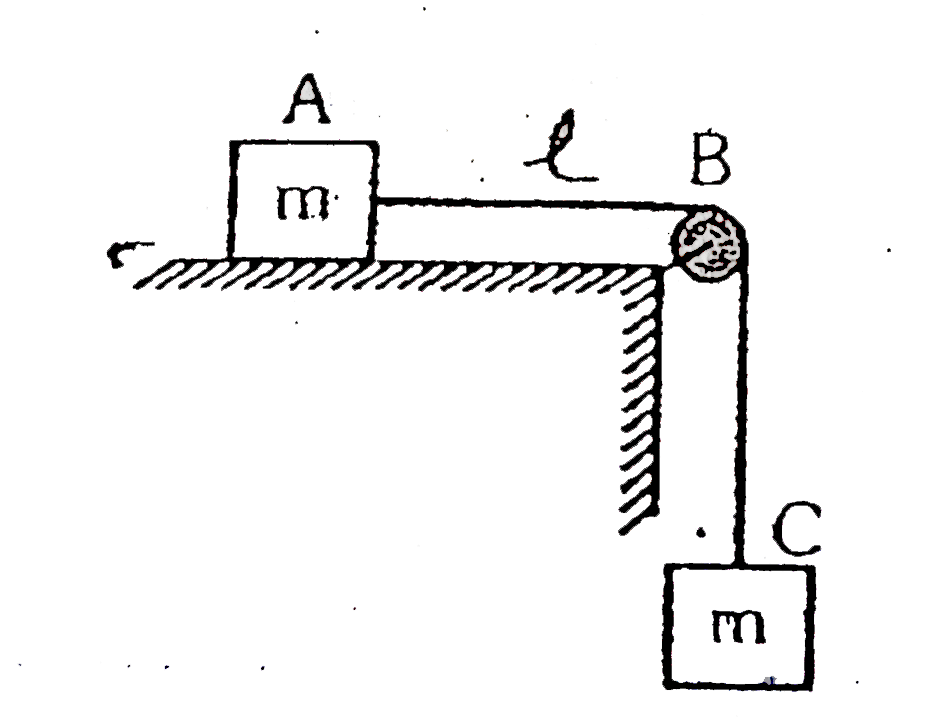 Solution in Gujrati
Solution in Gujrati
√2gl
√gl
√gl2
√gl4
The correct Answer is:C
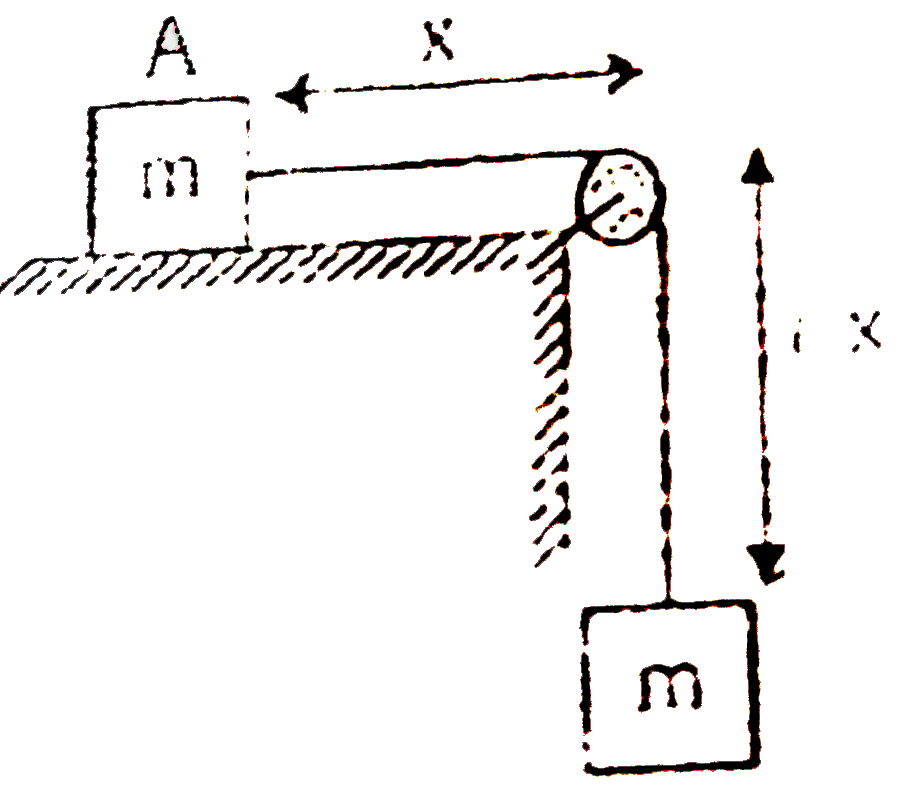
Distance between blocks s2=x2+(l−x)2
for minimum distance dsdx=0
⇒2x−2(l−x)=0⇒x=l2
Acceleration of system =mg2m=g2
Velocity of C at that instant=√2×g2×l2=√gl2
Topper's Solved these Questions
- TEST PAPERBOOK - ALLEN CHAPTER - TEST PAPEREXERCISE - PHYSICS
4 Videos
- TEST PAPERBOOK - ALLEN CHAPTER - TEST PAPEREXERCISE - PHYSICS
4 Videos
- SIMPLE HARMONIC MOTIONBOOK - ALLEN CHAPTER - SIMPLE HARMONIC MOTIONEXERCISE - Example
1 Videos
- TEST PAPER 1BOOK - ALLEN CHAPTER - TEST PAPER 1EXERCISE - PHYSICS
11 Videos
Similar Questions
Choose the correct statement:
View SolutionChoose the correct statement:
View SolutionA rod with rectangular cross section oscillates about a horizontal axis passing through one of its ends and it behaves like a seconds pendulum, its length will be
View SolutionWhy are electric field lines perpendicular at a point on an equipotential surface of a conductor ?
View SolutionIn the system shown all the surfaces are frictionless while pulley and string are massless. The mass of block A is 2m and that of block B is m. The acceleration of block B immediately after system is released from rest is
View SolutionIn the figure shown, the system is released frrom rest. Find the velocity of block A when block B has fallen a distance l . Assume all pulleys to be massless and frictionless.
View Solution1 kg and 4 kg blocks lie on a rough horizontal surface. The coefficient of friction between 4 kg blocks and surface is 0.2 while the coefficient of firction between 1 kg blocks and the surface is 0.6 . All the pulley shown in the figure are massless and frictionless and all strings are massless and frictionless and all strings are massless.
View SolutionFind out velocity of block B in the given figure : (all the pulleys are ideal and string are inextensible massless)
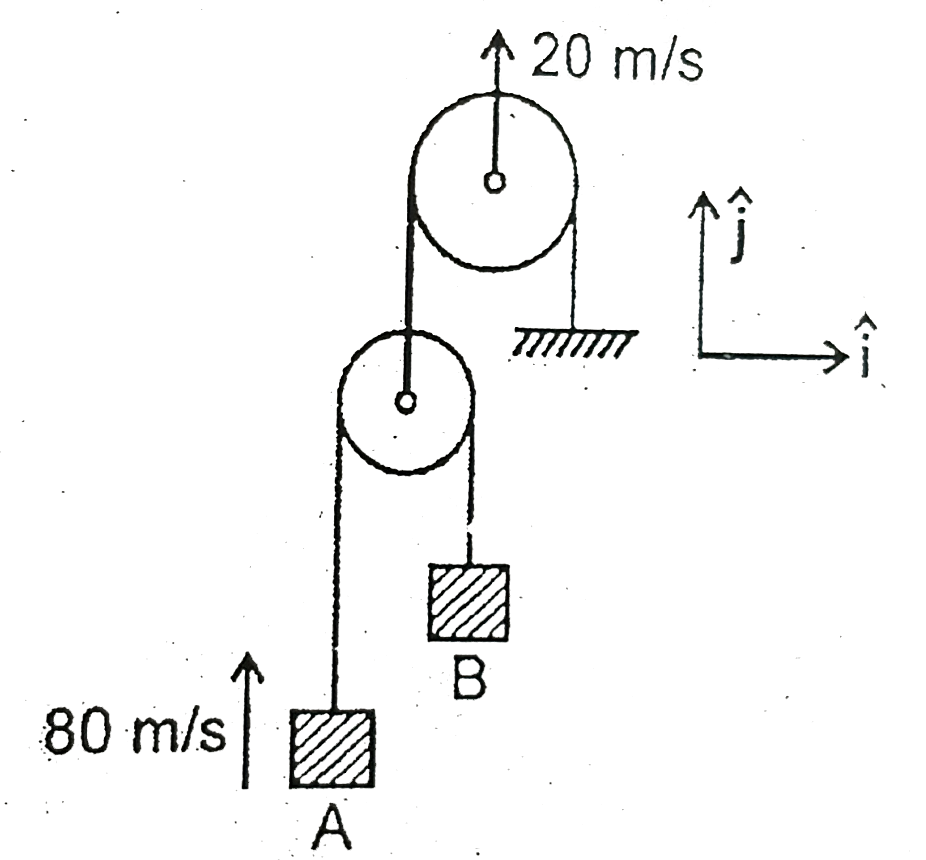
View SolutionFigure shows an arrangement of pulleys and two blocks. All surfaces are frictionless . All pulleys and strings are massless. All string are smooth and massless. The acceleration of block A is :
View SolutionFigure shows an arrangement of pulleys and two blocks. All surfaces are frictionless . All pulleys and strings are massless. All string are smooth and massless.
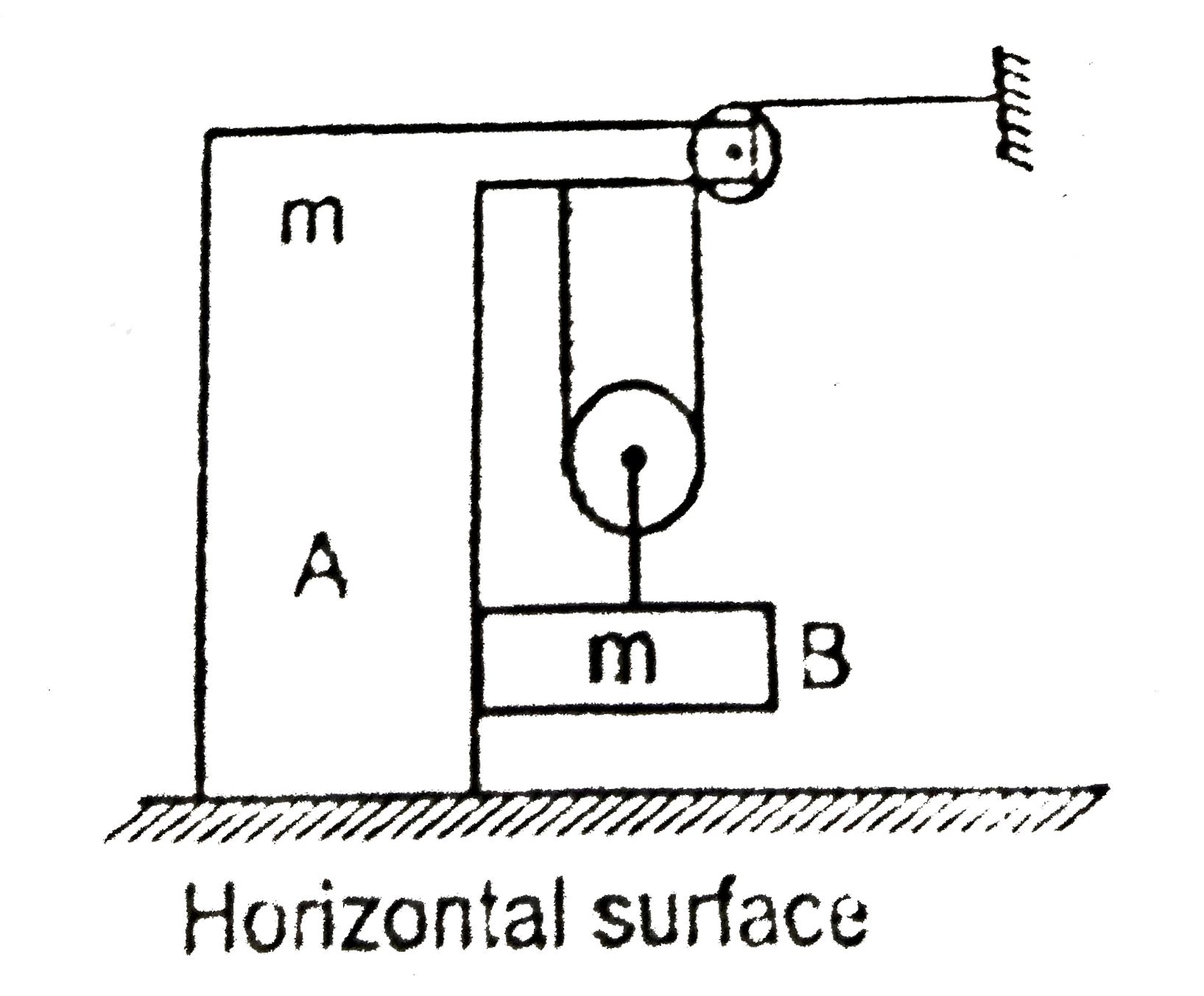
Normal reaction between A and B is :
View SolutionAcceleration of pulleys and blocks are as shown in the figure. All pulleys & strings are massless & frictionless magnitude of aA and aB are :
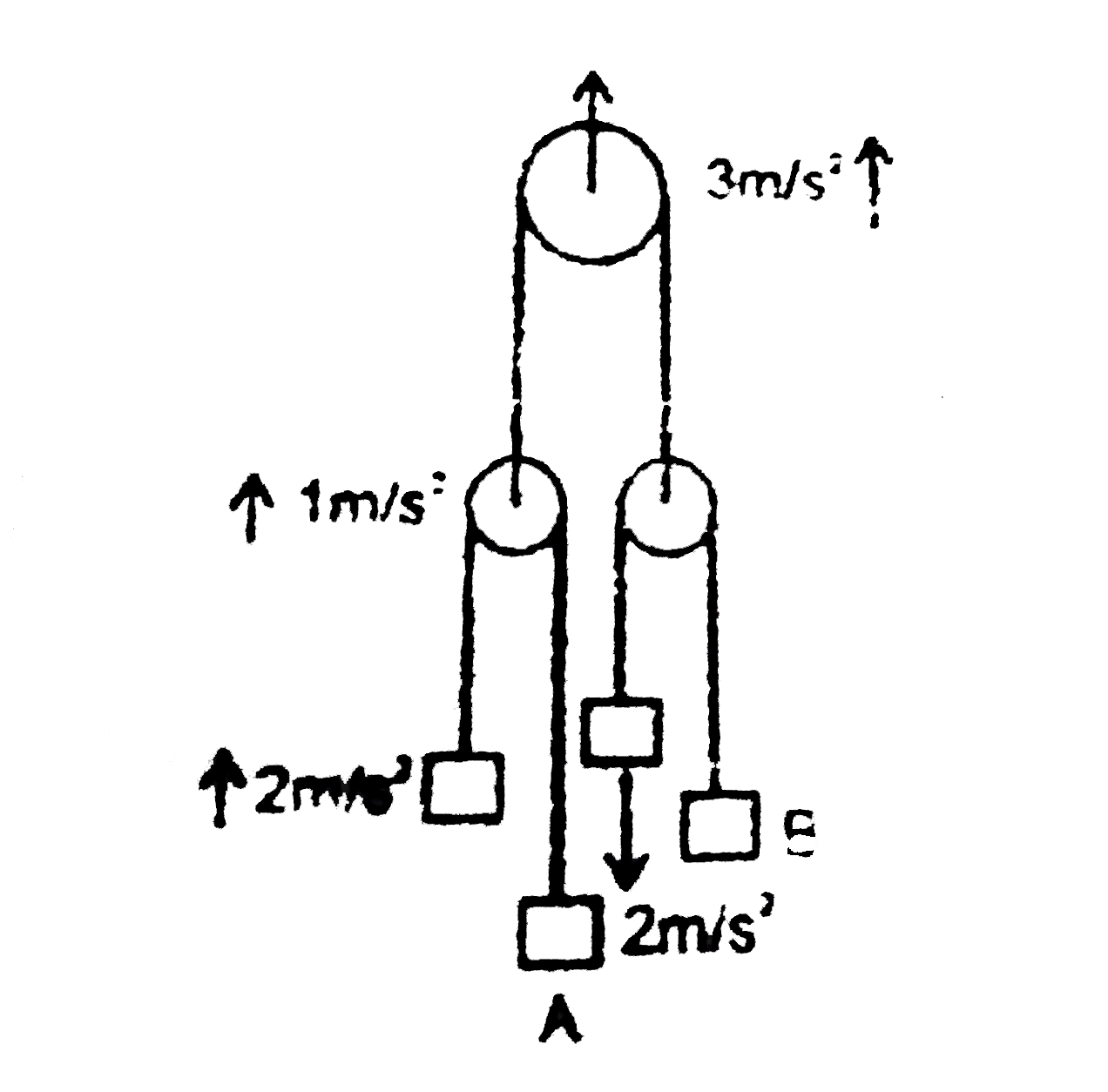 .
.
View SolutionAssume that all the pulleys are massless and frictionless and strings to be inextensible.
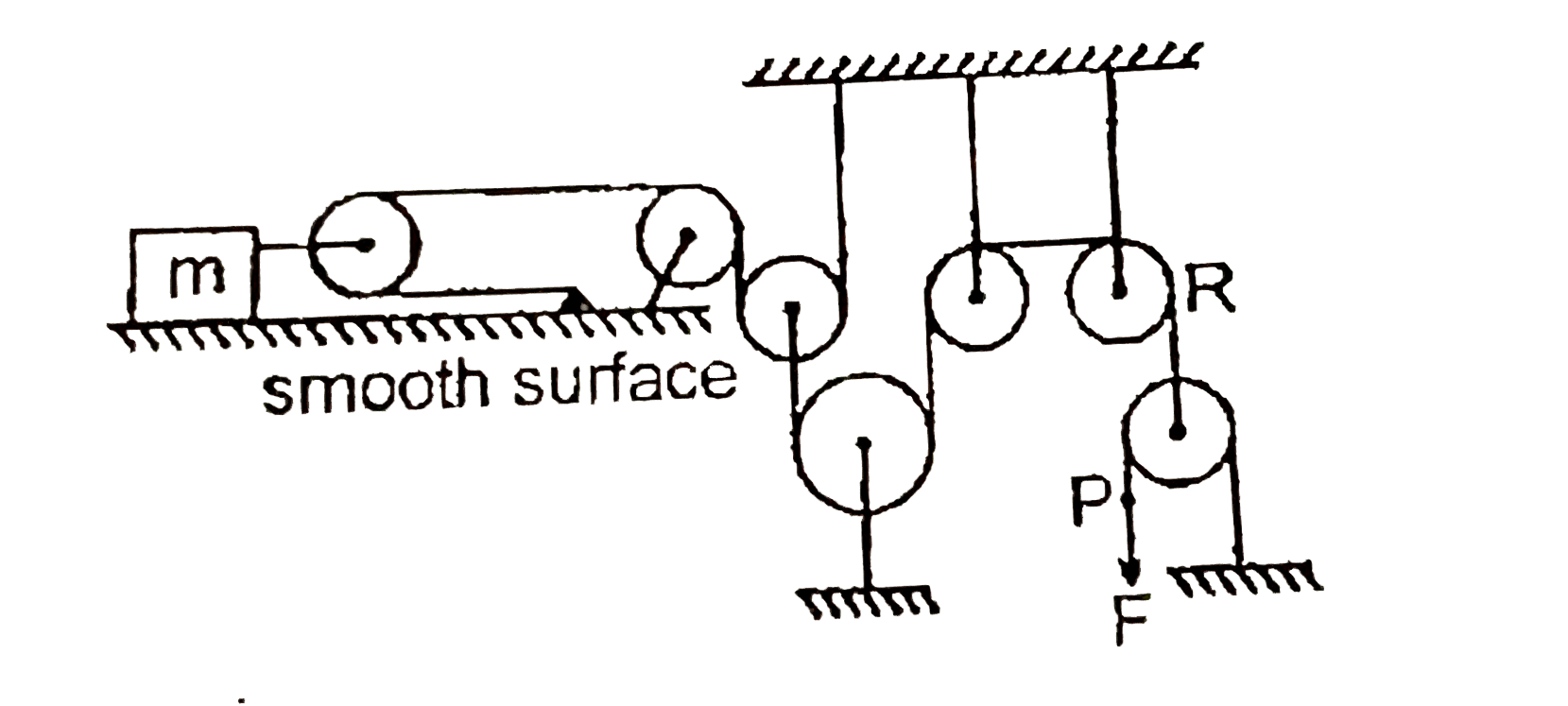
View SolutionIn the arrangement shown in the figure if the blocks of masses m and 2m are released from the state of rest tension in the string is (μ = coefficient of friction string is massless and inextensible pulley is frictionless )
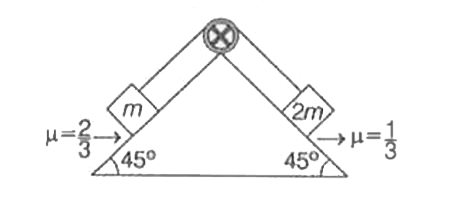
View SolutionFind the accelerations of two blocks. Assume pulleys and strings are massless and frictionless. Also assume the string to be inextensible.
View SolutionFind the relation between acceleration of the two blocks m_(1) and m_(2) . Assume pulleys are massless and frictionless and the strings are inextensible .
View SolutionIn the system shown in the given figure, the inline is frictionless, the string is massless, and inextensible pulley is light and frictionless. The system is released from rest.
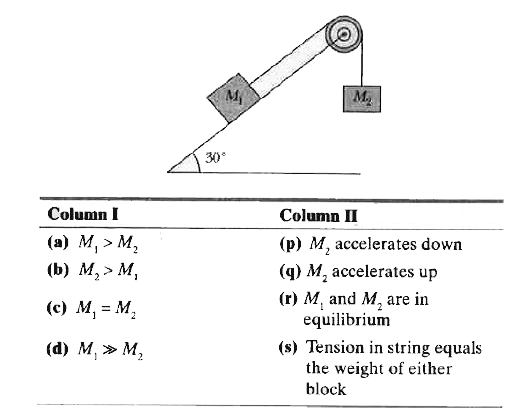
View Solution
